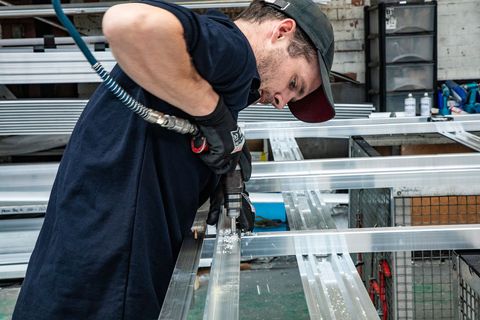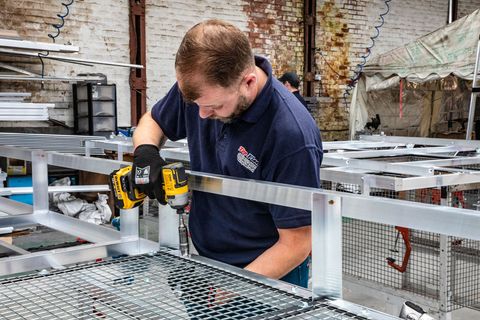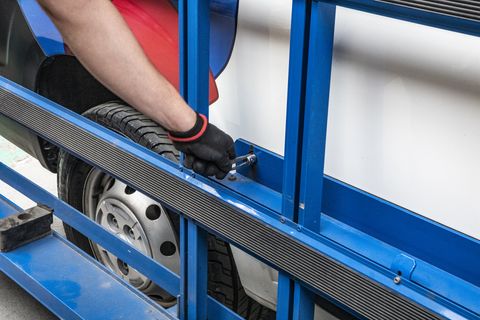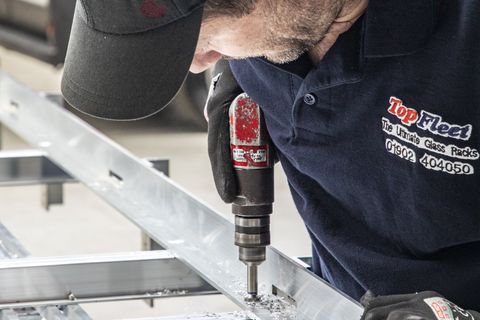Unique Aluminium Profile
- Highly stressed applications
- Trusses
- Bridges
- Cranes
- Transport applications
Rack Protector System
No Welding
Independent Safety Testing by CERAM
- 1. INTRODUCTION
Glass Carriers were provided by the client for use in the test programme. A total of six carriers of differing designs were used in the test programme.
- 2. DESCRIPTION OF SAMPLES
Each Glass Carrier consisted of a nominally 1m x 1m square vertical frame manufactured from extruded aluminium section, to the bottom of which was attached a 130mm deep ledge, either fixed or fold-down.
The samples tested were as follows:-
Sample 1 – no intermediate upright / fold-down ledge
Sample 2 – no intermediate upright / fixed ledge
Sample 3 – one intermediate upright / fold-down ledge
Sample 4 – one intermediate upright / fixed ledge
Sample 5 – two intermediate uprights / fold-down ledge
Sample 6 – two intermediate uprights / fixed ledge
Plates 1-6 show the above samples.
The fixed ledges were attached to each of the uprights by means of two rivets per upright. The fold-down ledges were attached to the uprights by means of #mm bolts, acting as hinges, through each upright. Each upright was strengthened by means of a steel channel where the hinge was located.
- 3. TEST METHOD
Each sample was bolted to a stiff steel framework by means of 4 no 8mm bolts, one at the top of each of the outer vertical uprights, and one approximately 250mm from the bottom of each of the outer vertical uprights. A load was then applied to the ledge by means of a hydraulic ram acting through a spreader plate. Deflection of the ledge was monitored and recorded at the centre of the underside of the ledge. Each sample was loaded until failure occurred with the exception of sample 1. Test 1 was terminated prior to failure as the loading rig started to bend. The rig was
strengthened prior to the testing of sample 2.
- 4. CONCLUSIONS
The results indicate that for each carrier type, the fixed ledge version is stiffer than the fold-down ledge version.
The ultimate failure loads of Samples 5 & 6 show that the ultimate strength of the fixed ledge type is greater than that of the fold-down version and the failure modes indicate that the supporting ledge itself is stronger than the method of fixing the carrier to a vehicle, possibly due to there being four fixing points for the ledge. The failure modes of Samples 3 & 4 indicate that the fold-down ledge type is stronger than the fixed ledge. This is probably due to the steel channels located at the fixing points of the fold-down ledge, which act as stiffening members.
It is likely that Sample 1 would have achieved a higher failure load than Sample 2 (ie greater than 23kN) had the loading rig not bent, leading to a similar conclusion to that of Samples 3 & 4.
In conclusion, the ultimate failure load of all the samples was in excess of 20kN per metre length of ledge, which is equivalent to more than 2 tonnes per metre length.




